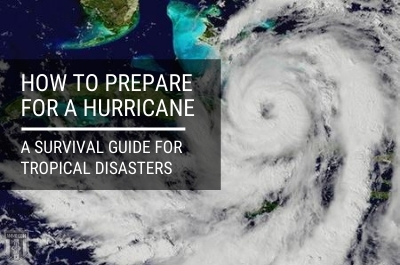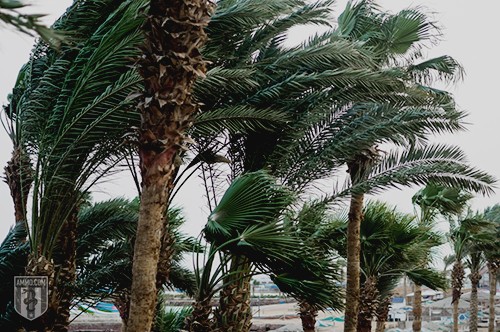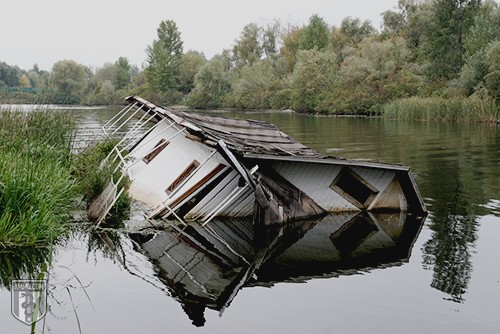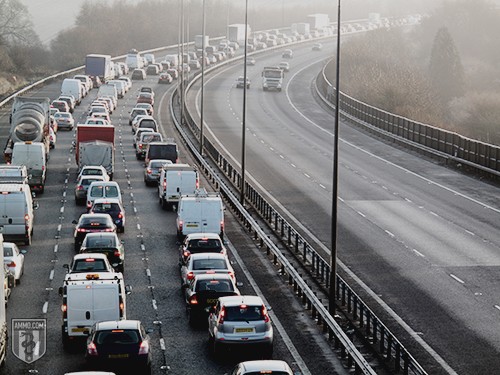 While living along the American coast gives you access to beautiful water and beaches, it also puts you at risk for some of the world’s most dangerous storms – hurricanes. And if you live in one of these ocean towns or cities, you must be prepared for them. These massive ocean storm systems cause flooding, storm surges, and high winds, and can even spawn tornadoes. They’re destructive forces and if proper precautions are not taken, they can be deadly.
While living along the American coast gives you access to beautiful water and beaches, it also puts you at risk for some of the world’s most dangerous storms – hurricanes. And if you live in one of these ocean towns or cities, you must be prepared for them. These massive ocean storm systems cause flooding, storm surges, and high winds, and can even spawn tornadoes. They’re destructive forces and if proper precautions are not taken, they can be deadly.
Hurricanes are powerful storms that start at sea. They occur in both the Pacific and Atlantic Oceans, but tend to hit coastal lands more in the east. Every hurricane starts as a tropical storm and grows in size and strength. If and when the storm’s sustained winds reach 74 mph or more, the storm is classified as a hurricane. Once a storm has reached this level, it is named and categorized one through five using the Saffir-Simpson Hurricane Wind Scale.
These massive storms can grow up to 600 miles across and take over a week to subside, as they only move 10 to 20 mph. Even category one hurricanes cause severe destruction, damaging roofs, snapping power lines, and toppling trees. And when the strongest storms hit, the damage is catastrophic. Homes are destroyed. Almost all trees are fallen. Those who don’t evacuate are often left completely isolated with no way in or out. It can take months for these areas to become livable again, and some never do.
 When preparing for a hurricane, it’s important to start well before there’s a storm in sight. And the first step in preparing for any type of disaster is to have a plan. Your hurricane preparedness plan should include when and how to get to safety, a checklist for what needs to be done before you leave, and phone numbers for out of town contacts. You should create two plans, one for if you evacuate and one for staying home during the storm.
When preparing for a hurricane, it’s important to start well before there’s a storm in sight. And the first step in preparing for any type of disaster is to have a plan. Your hurricane preparedness plan should include when and how to get to safety, a checklist for what needs to be done before you leave, and phone numbers for out of town contacts. You should create two plans, one for if you evacuate and one for staying home during the storm.
Once you have your hurricane disaster plan, here’s how you prepare for a hurricane:
A hurricane disaster preparedness kit provides you with the necessary things you need in case of an emergency. Be sure to have at least three to five days worth of supplies, as it can take days after a hurricane before flooding resides and emergency personnel are able to get streets open and safe.
Here’s what your kit needs to include:
If you live in an area that’s at risk for hurricanes, it’s important to prepare your home for tropical storms before the season hits.
Here’s what should be done:
Certain areas are more at risk for hurricanes than others. That’s because tropical storms and hurricanes need water temperatures of at least 79 degrees Fahrenheit to form, which is why they tend to occur during specific seasons. For the Pacific coast, hurricane season runs from May 15th through December 30th, while the season starts on June 1st for the Atlantic coast and ends on December 30th – peaking from mid-August through October. Although most hurricanes happen during this time period, it should be mentioned that hurricanes occasionally can and do occur outside this window.
It’s also important to understand the specific risk at any given time. The National Ocean Service uses a watch and warning alert system to notify people and communities of the current risk.
Here’s what each of these classifications signify:
If you live in a hurricane-prone area, you should contact your local emergency management office or the American Red Cross to get information on the community’s hurricane plan. This will inform you of evacuation routes, shelters, and the area’s communication system.
 When a hurricane hits land, it’s accompanied by heavy rains and storm surges, sending flood and ocean waters into homes and businesses. Yet homeowner insurance policies do not cover flood damage, even if it was caused by a hurricane. If you’re located in an area that is at risk for hurricanes, invest in flood insurance.
When a hurricane hits land, it’s accompanied by heavy rains and storm surges, sending flood and ocean waters into homes and businesses. Yet homeowner insurance policies do not cover flood damage, even if it was caused by a hurricane. If you’re located in an area that is at risk for hurricanes, invest in flood insurance.
Areas prone to hurricanes have predetermined hurricane evacuation routes – you should know them and drive them. You should also have at least one, preferably two, alternative evacuation routes that will take you at least 20 to 50 miles inland.
Your hurricane emergency preparedness plan should also include where you will go when you evacuate. Will you go to an emergency shelter? Where is it? Will you go to your sister’s? A hotel? Have those decisions made and make sure everyone in your family is aware of the plan. And just like with the evacuation route, you should have at least one alternate destination, just in case you can’t make it to your first one.
Become aware of your community’s hurricane and evacuation procedures. Many cities and towns have an email or text alert system, which will automatically notify you of hurricane warnings and evacuation orders.
When a hurricane hits, things can happen quickly and you may end up separated from family. That’s why you need a family communication plan. This plan appoints an out-of-state friend or relative as the primary contact person, and determines that everyone call that person at a specific increment of time. That way if the family gets separated, they still know everyone is safe.
While preparation is mandatory for safety during a hurricane, you still need to know what to do during a hurricane to stay safe.
 If an evacuation is ordered, evacuate. These orders are based on science-based predictions, and they are not given lightly. That’s why you should never, for any reason, ignore an evacuation order. When you do, you significantly increase your risk of injury and death, as the most common reason fatalities and injuries occur during a hurricane is because of an ignored evacuation order.
If an evacuation is ordered, evacuate. These orders are based on science-based predictions, and they are not given lightly. That’s why you should never, for any reason, ignore an evacuation order. When you do, you significantly increase your risk of injury and death, as the most common reason fatalities and injuries occur during a hurricane is because of an ignored evacuation order.
Here’s what to keep in mind when you’re evacuating:
Before a hurricane hits, take the time to prepare. These are huge, dangerous storms that wreak havoc on America’s coastlines and destroy homes that aren’t properly protected. Instead, make a plan, build an emergency preparedness kit, and evacuate when told to. That way, you protect your home and your family, even when a hurricane hits.
